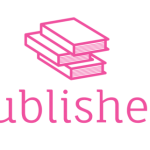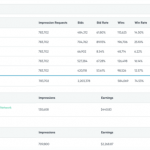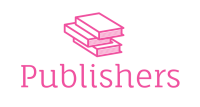Big Publishing Wants To Co-Opt The Open Textbook Revolution
The digital revolution has been rocking the academic publishing applecart for years. Students bristling at the price of books—an intro biology text can cost hundreds—have been turning to alternatives like book rentals and e-texts.
Increasingly, there is a new challenge from the growing Open Textbook Revolution—and traditional bookmakers, after years of opposition and lawsuits alleging copyright infringement, are trying to get a piece of the action as their glossy hardbacks get tossed aside.
Open texts are free academic materials written by educators and professionals that are peer-reviewed and licensed to be freely downloaded. They can also be something as simple as professors’ lecture notes made available for free for teachers and students to use, print, and modify as they see fit.
Thanks to investments by universities and private foundations, many of the free online peer-reviewed texts are on par with the big bucks’ books in terms of depth and production values—and they’re rapidly gaining traction.
OpenStax, a nonprofit run by Rice University, estimates that its peer- reviewed, Creative Commons-licensed resources are in use at 27% of colleges and universities across the country. That saves students $77 million in textbook costs in the most recent school year alone, according to OpenStax estimates. Its titles are available for free download or in hard copy form for essentially the cost of printing.
Several state university systems have also launched their own open text publishing projects and directories, like the University of Minnesota’s Open Textbook Library. The Massachusetts Institute of Technology has made materials from 2,400 courses freely available through its OpenCourseWare project. And materials from Harvard University’s introductory computer science class, the school’s most popular course, are freely available online.
Overall, open resources are used in more than 10% of high-enrollment introductory and core classes at colleges across the country, estimates David Wiley, the chief academic officer at Portland open educational resources (OER) startup Lumen Learning.
If You Can’t Beat ‘Em, Join ‘Em
“That’s accelerating every year,” says Wiley, who also leads the Open Education Group at Brigham Young University. “That number was zero 10 years ago.”
And while colleges initially invested in open resources partially as an alternative to traditionally costly textbooks, traditional publishers are increasingly getting into the open resource game themselves. They’re looking for ways they can combine open source materials with proprietary content, and with online materials like interactive quizzes that professors can use to track how their students are doing.
Publishers are even experimenting with new pricing models, like so-called “inclusive access” deals, where schools negotiate a per-student fee for access to online course materials, similar to how they might license software from Microsoft or Adobe rather than a traditional textbook arrangement.
“I think the move to OER is part of a broader move away from print and to digital, which is certainly where our members are moving with textbooks and adaptive learning materials and other materials,” says David Anderson, executive director for higher education at the Association of American Publishers. “I don’t know that print will ever disappear entirely, but I think five to 10 years from now, higher education textbooks are going to be by and large digital.”
Many professors like that they can edit open resources to suit the needs of their students, and certainly some have a philosophical preference for more freely available content. But there’s no question that much of the recent push to use open texts has been motivated by the cost of traditional textbooks.
Researchers from organizations ranging from the liberal Student Public Interest Research Groups to the conservative American Enterprise Institute have reported that textbook prices are rising significantly higher than inflation. The AEI report indicates book prices have risen 90% since 1998—and that’s after adjusting for inflation—and points to individual texts like an organic chemistry book sold for $376 and a tax accounting book on sale for $389.
“The educators are acutely aware of this [pricing] problem,” says Charles Key, founder of COT Education, a nonprofit that supports open books and maintains College Open Textbooks, a directory of what’s available.
Publishers generally argue those numbers don’t take into account students finding discounts online, using cheaper e-books, or renting course materials. And, they say, their new packages blending open material with their own content deliver the best of both worlds, including professionally fact-checked reading material and professor-friendly features like automatically graded quizzes and homework problems, all for less than the cost of a traditional book. Boston-based Cengage, for example, announced a pilot program in January offering blended packages for introductory psychology, world history, and other courses, with pricing starting at just $40. And Macmillan’s Sapling Learning online homework system offers coursework geared for the OpenStax series of open textbooks.
Those programs come as schools and individual instructors are increasingly adept at using open materials in the classroom.
Virginia’s Tidewater Community College is even offering what it calls a Z-Degree, where students can complete a two-year associate’s degree without ever needing to pay for books. The school cites research saying students are more likely to complete courses and earn better grades when they don’t have to worry about spending money on costly texts. That’s especially true at community colleges, where students are often struggling to pay the bills.
“By percentage, they’re much more expensive for community college attendees because, of course, tuition is so much lower at a community college,” Key says. “In California, we frequently find now that the cost of textbooks is equal or more to the cost of tuition.”
And at Northern Virginia Community College, assistant professor of geology Shelley Jaye says courses using open resources result in more students passing. And not paying for books can even help students afford to take additional classes.
“Students that have taken a course with me using open educational resources will come back and take another class knowing that I’m using open resources across the courses I teach,” Jaye said in a June 28 online panel organized by Cengage.
But even when colleges and professors are looking to use open resources, publishers argue students can still benefit from the industry’s decades of expertise. Publishers can bundle open materials from multiple sources and add supplements like video. And they can provide edited and expert-reviewed versions of open materials, and combine them with online content like interactive quizzes.
“The beauty of OER is you can actually use that content any way you want—you have the rights to it,” says Cheryl Costantini, vice president of content strategy at Cengage.
Online quizzes can help professors gauge student progress and spot struggling students early in the semester, even if they never reach out for help. Publishers can even provide digital analytics tools tracking which students actually cracked the virtual spines of the textbook.
“I heard over and over again, I love the idea of not charging students, but there’s no way I’ll work on grading homework again,” said Barbara Illowsky, chief academic affairs officer at the California Community Colleges Online Education Initiative, at the Cengage panel. “Now, we have partnerships with corporate America where they do what they do best, which is a lot of the technology or the support materials.”
Publishers say they can offer the complete package of open content and supplementary materials for well under the cost of a traditional textbook. And, they say, they have expertise in building the software needed to make those quizzes and tracking systems reliably work.
“Never say never, but I think for these adaptive learning materials and other things I’ve described to work, you really need large databases,” Anderson says. “That is certainly one of our big strengths.”
As schools turn to open digital resources to cut student costs, reeling college book makers are looking for ways to monetize the free content.
The digital revolution has been rocking the academic publishing applecart for years. Students bristling at the price of books—an intro biology text can cost hundreds—have been turning to alternatives like book rentals and e-texts.
Fast Company , Read Full Story
(75)











